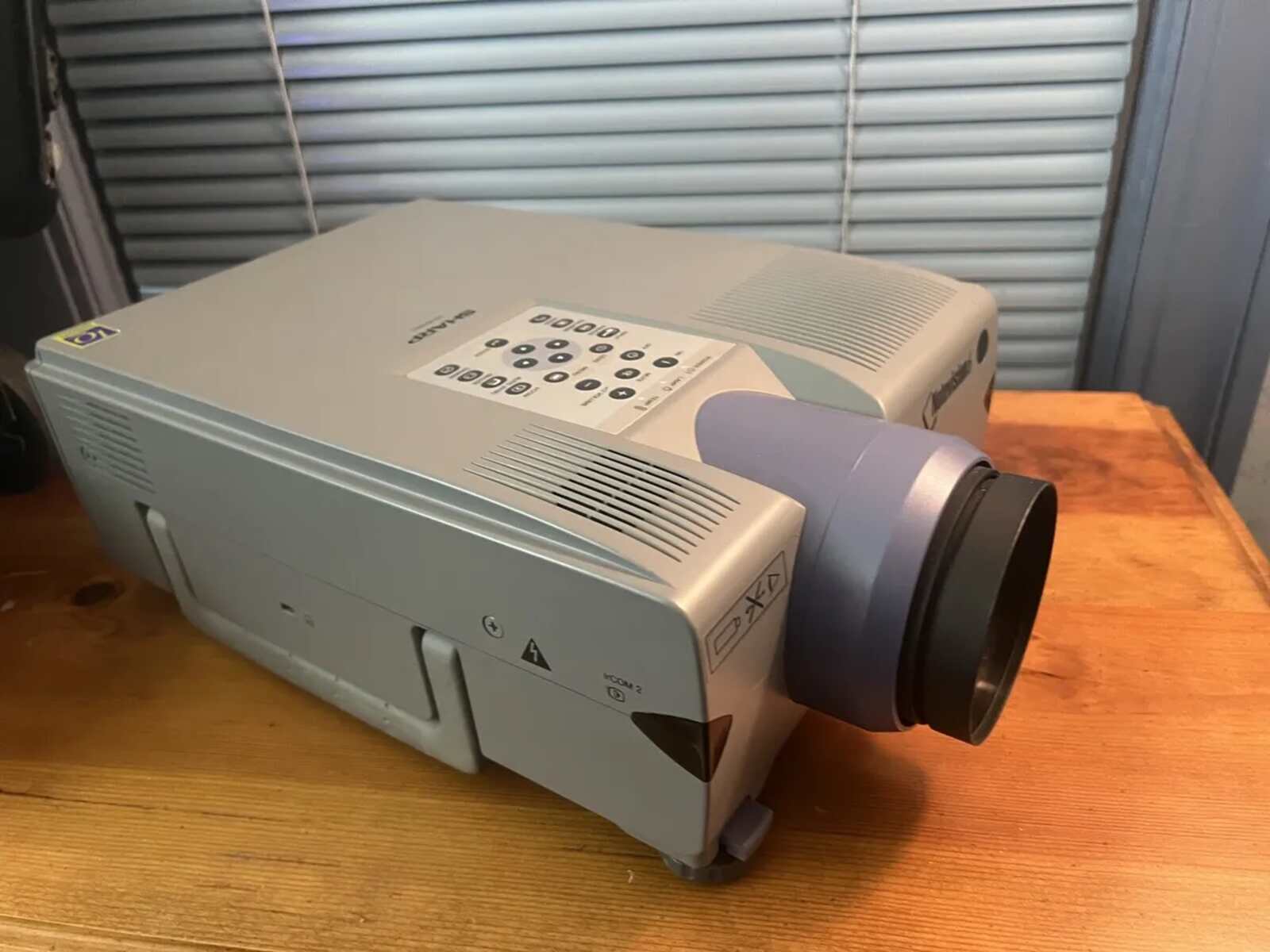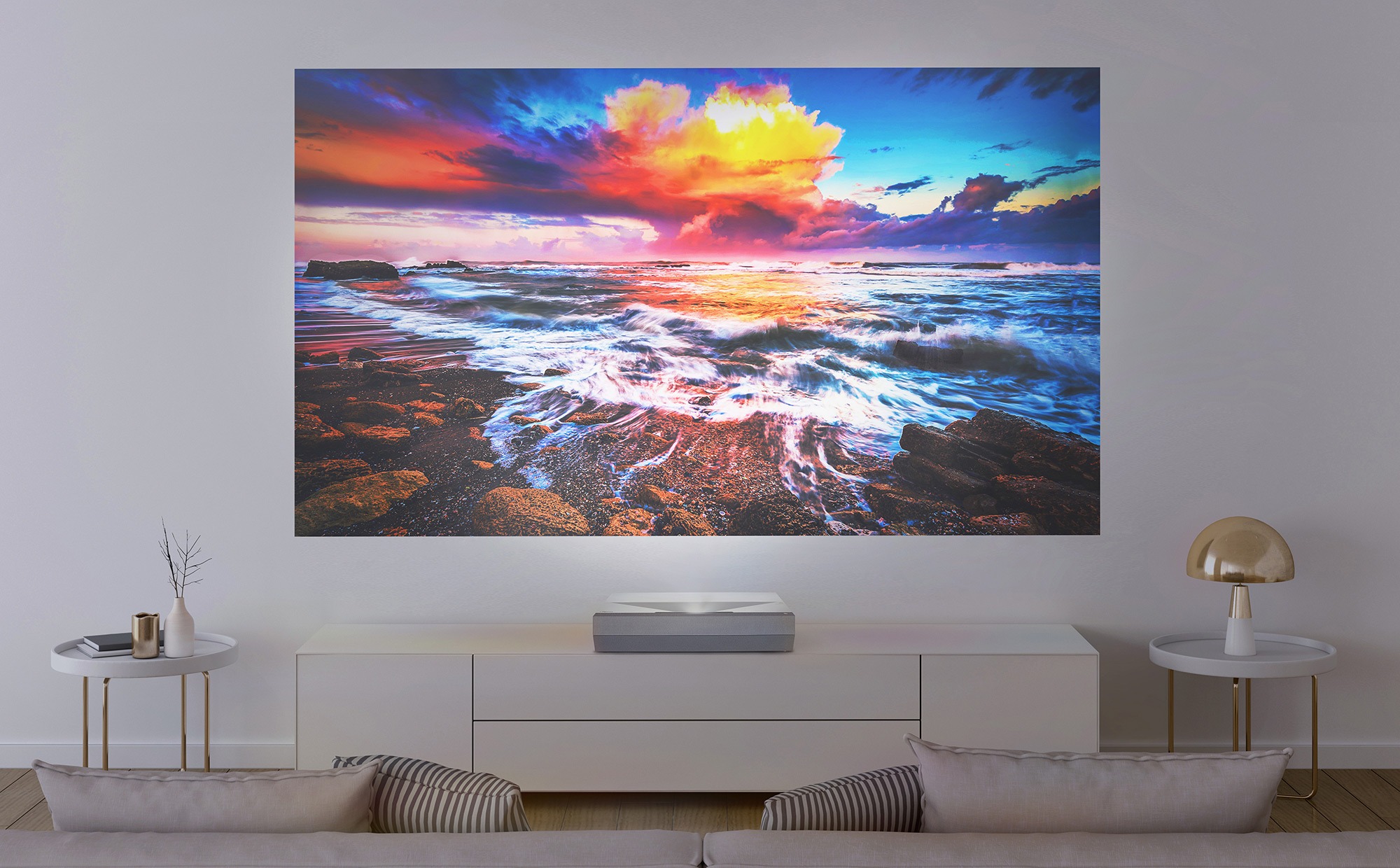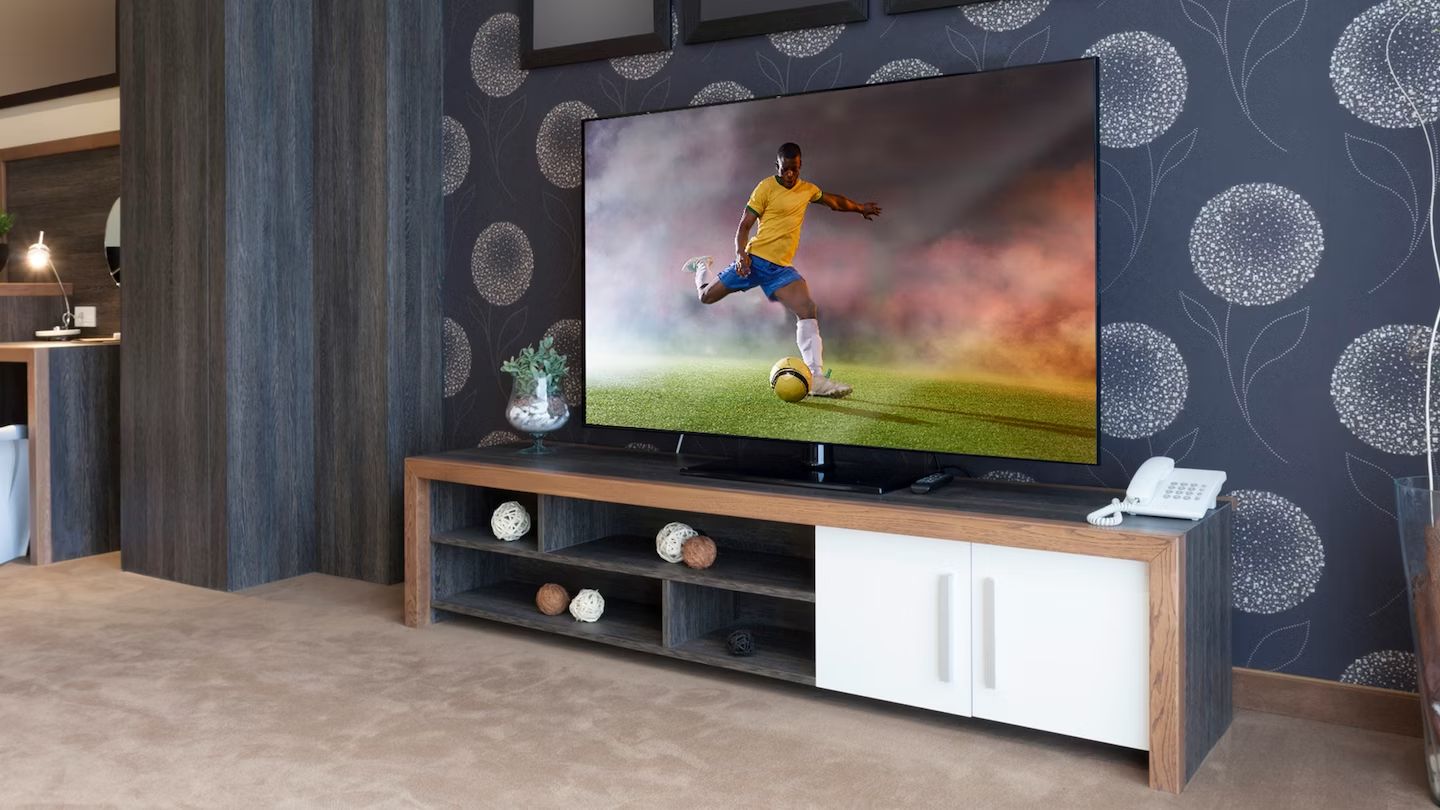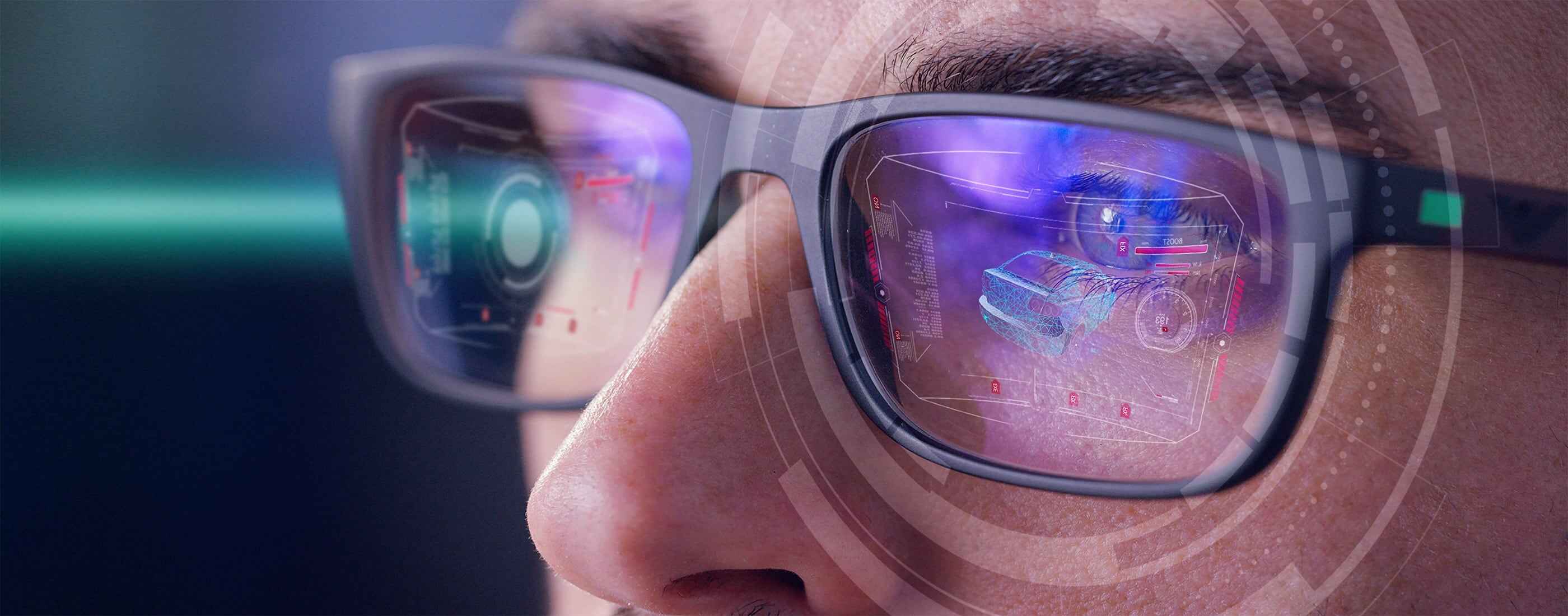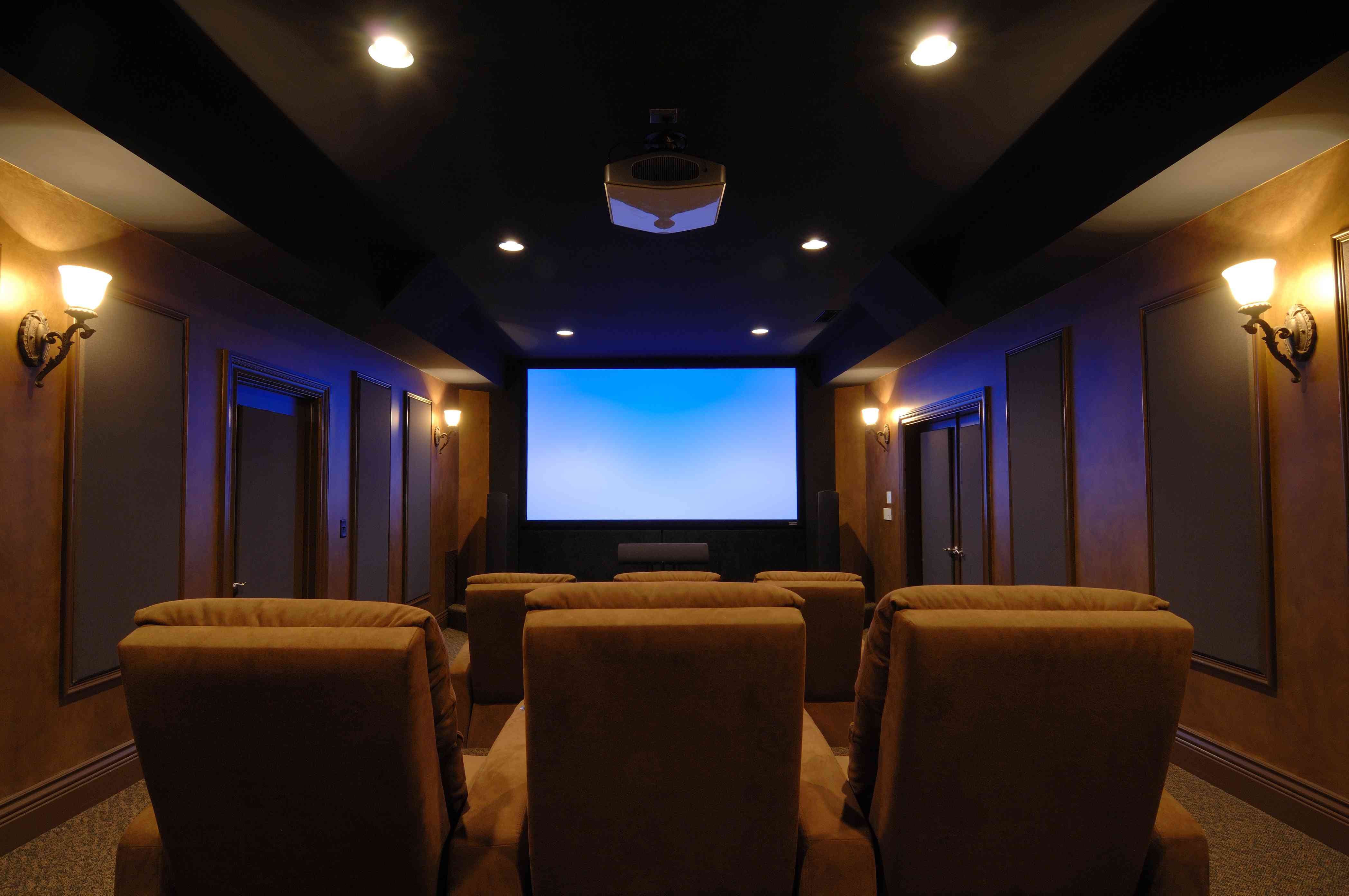Introduction
Welcome to the world of digital projectors! These remarkable devices have revolutionized the way we consume visual content by delivering captivating images on large screens. Whether you are a business professional presenting in a boardroom, a teacher engaged in interactive lectures, or a cinephile enjoying a home theater experience, digital projectors have become an essential tool for displaying high-quality visuals.
In this article, we will delve into the purpose and functionality of digital projectors, their evolution over time, common applications, and the benefits they offer. We will also explore the factors to consider when choosing a digital projector and provide tips for setting it up and troubleshooting common issues.
With digital projectors, the possibilities are endless. They allow you to project not only images and videos but also presentations, graphics, and even live streaming content. This flexibility has made digital projectors integral in various settings, such as businesses, educational institutions, entertainment venues, and personal use.
So, whether you’re new to the world of digital projectors or looking to upgrade your existing setup, this article will provide valuable insights and guidance to help you navigate the exciting world of digital projection technology.
How Digital Projectors Work
Understanding the inner workings of digital projectors is key to appreciating their remarkable capabilities. At the core, digital projectors utilize a combination of advanced technologies to transform input signals into high-quality images projected onto a screen.
The primary components of a digital projector include an image source, an imaging system, and a projection lens. The image source, typically a digital file or a video source, serves as the input signal for the projector. This source could be a computer, DVD player, gaming console, or even a smartphone.
Once the image source is connected to the projector, the imaging system takes over. This system comprises one of two primary technologies: Digital Light Processing (DLP) or Liquid Crystal Display (LCD). In DLP projectors, tiny mirrors are used to reflect light, while LCD projectors employ liquid crystals to manipulate light.
Regardless of the technology, the imaging system processes the input signal by dividing it into pixels, which are the building blocks of the projected image. Each pixel is assigned a specific color value based on the image source, creating a digital representation of the visuals.
Once the image is converted into pixels, the projector’s projection lens focuses the light emitted by the imaging system onto a screen. This lens system ensures that the pixel information is accurately projected onto the desired surface, resulting in a clear and properly aligned image. The quality of the lens and the projector’s resolution capabilities play a crucial role in determining the sharpness and clarity of the projected visuals.
To ensure accurate reproduction of colors, digital projectors employ color calibration techniques. These techniques involve adjusting the intensity and balance of each primary color (red, green, and blue) to achieve optimal color accuracy. This calibration process enhances the overall image quality and ensures that the projected colors match the original source.
In addition to the core components, modern digital projectors often come with additional features and connectivity options. These include built-in speakers, HDMI ports, USB ports, and network connectivity, allowing seamless integration with various devices and sources.
Overall, the intricate interplay between the image source, imaging system, projection lens, and color calibration techniques enables digital projectors to transform static digital content into dynamic, lifelike images on a larger screen.
The Evolution of Digital Projectors
The journey of digital projectors dates back to the early 1980s when the first prototypes were developed. These early models were bulky, expensive, and lacked the image quality and functionality we associate with modern digital projectors.
Over the years, significant advancements in technology have led to the evolution of digital projectors into sleek, portable, and high-performance devices. Let’s take a closer look at the key milestones in the evolution of digital projectors:
1. CRT Projectors: In the early days, analog Cathode Ray Tube (CRT) projectors dominated the market. These large, heavy devices utilized electron beams to project analog images onto a screen. While CRT projectors offered acceptable image quality, they were limited in terms of portability and resolution.
2. Digital Light Processing (DLP) Technology: In 1987, Texas Instruments introduced Digital Light Processing (DLP) technology, revolutionizing the projector industry. DLP projectors used an array of microscopic mirrors to reflect light and create images with exceptional clarity and contrast. DLP technology also allowed for higher resolutions and improved color reproduction.
3. Liquid Crystal Display (LCD) Projectors: In the late 1980s, LCD projectors emerged as an alternative to CRT projectors. LCD technology utilized liquid crystals to manipulate light and create images. LCD projectors offered better portability, higher resolution, and improved color accuracy compared to their predecessors.
4. Compact and Portable Projectors: As technology continued to advance, digital projectors became more compact and portable. Manufacturers began focusing on reducing the size and weight of projectors without compromising on image quality. This made projectors more versatile, allowing them to be easily transported and set up in various locations.
5. High-Definition (HD) Projectors: The advent of high-definition content prompted the development of high-definition projectors. These projectors offered resolution capabilities that matched or surpassed the quality of HD content, resulting in crystal-clear, immersive visuals. HD projectors became particularly popular in home theater setups and professional multimedia applications.
6. Laser Projectors: In recent years, laser projectors have gained traction due to their long-lasting light source, low maintenance requirements, and superior image quality. Instead of traditional lamps, laser projectors use laser diodes to produce bright and vibrant images. Laser projectors deliver excellent color accuracy, wide color gamut, and better energy efficiency.
Today, digital projectors have become an integral part of various industries, including business, education, entertainment, and home use. With advancements in technology, we can expect further innovations in areas such as 4K and 8K resolutions, enhanced color reproduction, improved connectivity options, and increased portability.
The evolution of digital projectors has not only improved the user experience but has also made these devices more accessible and affordable. As a result, they have transformed the way we interact with visual content and opened up new possibilities for immersive presentations, engaging lectures, and cinematic experiences.
Common Applications of Digital Projectors
Digital projectors have found a wide range of applications across various industries due to their versatility, portability, and high-quality image projection. Let’s explore some of the common uses of digital projectors:
1. Business Presentations: One of the primary applications of digital projectors is in business presentations. Whether it’s a sales pitch, a training session, or a boardroom meeting, digital projectors allow presenters to showcase their ideas, data, and multimedia content on a larger screen. The ability to project detailed visuals helps capture the attention of the audience and enhances the overall impact of the presentation.
2. Educational Institutions: Digital projectors have become an essential tool in classrooms, lecture halls, and training centers. Teachers and professors can engage students by projecting interactive lesson materials, videos, diagrams, and educational apps. This visual approach to teaching enhances comprehension and encourages active participation among students.
3. Home Theater Systems: Digital projectors offer a cinematic experience right in the comfort of your own home. With a large projection screen or a blank wall, you can transform your living room into a personal theater. HD projectors, combined with surround sound systems, provide immersive and lifelike visuals that enhance the enjoyment of movies, TV shows, and sports events.
4. Entertainment Venues: From concert venues to sports stadiums, digital projectors are used to create larger-than-life visuals for spectators. In stadiums, projectors display live action replays and statistical graphics on giant screens, improving the viewing experience for the audience. Similarly, in concert venues, projectors project visuals that synchronize with music performances, enhancing the visual aspect of the show.
5. Digital Signage and Advertising: Projectors are utilized in digital signage and advertising to capture attention and deliver dynamic content. They are commonly used in retail stores, airports, museums, and trade shows to display promotional videos, product information, and brand messaging. The large projected images attract the attention of passersby and create a visually engaging environment.
6. Gaming and Virtual Reality: Gamers and virtual reality enthusiasts also benefit from digital projectors. By connecting gaming consoles or virtual reality headsets to projectors, users can enjoy an immersive gaming experience on a large screen. This setup provides a more engaging and visually stimulating gaming environment.
7. Event Productions: Digital projectors play a crucial role in event productions, including conferences, concerts, and live performances. They are used to project visuals, presentations, and live streaming content on large screens for an audience. The versatility and portability of digital projectors make them an ideal choice for events held in various venues.
These are just a few examples of the many applications of digital projectors. Whether it’s for professional purposes, educational settings, entertainment venues, or personal use, digital projectors have become an indispensable tool for delivering captivating visual experiences.
Benefits of Using a Digital Projector
Digital projectors offer numerous advantages that make them a valuable tool for a wide range of applications. Let’s explore some of the key benefits of using a digital projector:
1. Enhanced Visual Experience: One of the primary advantages of using a digital projector is the ability to display visuals on a large screen. Whether it’s a presentation, movie, or video game, projecting the content on a bigger surface enhances the visual experience, allowing for better detail and immersion.
2. Portability: Modern digital projectors are compact and lightweight, making them highly portable. They can be easily transported from one location to another, enabling you to set up a projection system wherever needed. This portability is particularly beneficial for business professionals, educators, and event organizers who frequently move between different venues.
3. Versatility: Digital projectors offer versatile connectivity options, allowing them to connect to various devices such as computers, laptops, smartphones, gaming consoles, and DVD players. This versatility enables users to project a wide range of content, including presentations, videos, images, and live streaming, giving them the flexibility to adapt to different media sources.
4. Cost-Effectiveness: Digital projectors are cost-effective compared to installing large monitors or screens. With a projector, you can achieve a larger image size without the high cost associated with large display panels. This makes them a more affordable option for businesses, educational institutions, and home theater setups.
5. Collaboration and Interactivity: Digital projectors promote collaboration and interactivity in various settings. During business meetings or classroom sessions, projectors allow participants to view and interact with shared content simultaneously. This shared visual experience fosters engagement, improves communication, and enhances learning.
6. Adjustable Image Size: Unlike fixed-size display devices, such as TVs, digital projectors offer flexibility in adjusting the image size according to the environment. Whether you need a small image for a meeting room or a large image for a conference hall, projectors can accommodate different projection sizes, making them adaptable to various spaces and audience sizes.
7. Easy Setup and Installation: Digital projectors are relatively easy to set up and install. With simple connections, such as HDMI or VGA cables, and automatic keystone correction features, users can quickly get the projection system up and running. This user-friendly setup process saves time and effort, especially for those who frequently move or need to set up temporary projection systems.
8. Energy Efficiency: Many modern digital projectors are designed to be energy-efficient. They incorporate features such as low-power modes and automatic shut-off, which help conserve energy when the projector is not in use. This energy efficiency not only saves on electricity costs but also reduces the environmental impact of the device.
Overall, the benefits of using a digital projector span across improved visual experience, portability, versatility, cost-effectiveness, collaboration, adjustability, easy setup, and energy efficiency. These advantages make digital projectors a valuable tool in various settings, enhancing presentations, entertainment experiences, and interactive learning environments.
Factors to Consider When Choosing a Digital Projector
Choosing the right digital projector can significantly impact your visual experience, whether it’s for business presentations, educational purposes, or home entertainment. To ensure you make an informed decision, consider the following factors when selecting a digital projector:
1. Resolution: The resolution of a projector determines the level of detail in the projected images. Higher resolutions, such as Full HD (1920 x 1080) or 4K (3840 x 2160), offer sharper, more lifelike visuals. Consider your requirements and budget to choose a resolution that meets your needs.
2. Brightness: The brightness, measured in lumens, determines how well the projector displays images in well-lit environments. Higher brightness is crucial for spaces with natural or artificial light, ensuring that the projected content remains visible and vibrant. Consider the ambient lighting conditions of your intended projection area when selecting a projector.
3. Contrast Ratio: The contrast ratio indicates the difference in brightness levels between the darkest and brightest parts of an image. A higher contrast ratio results in more vibrant and realistic visuals, with better differentiation between dark shadows and bright highlights. Look for projectors with higher contrast ratios for better image quality.
4. Throw Distance: The throw distance refers to the distance between the projector and the screen as well as the size of the projected image. Consider the available space in your setup area and the desired screen size. Some projectors offer short-throw or ultra-short-throw capabilities, allowing for larger images in smaller spaces.
5. Connectivity Options: Ensure that the projector provides the necessary connectivity options to connect with your devices. HDMI, VGA, USB, and wireless connectivity are commonly available options. Verify that the projector supports the input sources you intend to use, such as laptops, gaming consoles, or streaming devices.
6. Installation and Portability: Consider whether you need a permanently installed projector or a portable option. Installable projectors often offer features like lens shift and zoom adjustments for easy setup, while portable projectors prioritize lightweight and compact design for flexibility in moving between different locations.
7. Sound Quality: While most projectors come with built-in speakers, they may not provide the best audio experience. If quality sound is important, consider external audio options like soundbars or connecting the projector to a separate audio system to enhance the sound quality of your projections.
8. Durability and Maintenance: Review the projector’s build quality and reliability. Look for features like dust-resistant filters or lamp lifespan. Consider the ease of maintenance, including lamp replacement or cleaning procedures, to ensure trouble-free usage and longevity.
9. Price and Value for Money: Set a budget and weigh the features and specifications of various projectors within that range. Consider the overall value for money, balancing your requirements and the projector’s capabilities to make the best financial decision.
By considering these factors, you can narrow down your options and find a digital projector that best suits your needs, delivering outstanding image quality and an optimal viewing experience for your specific application.
Setting Up a Digital Projector
Setting up a digital projector may seem intimidating at first, but with a systematic approach, it can be a relatively straightforward process. Here are the steps to follow when setting up a digital projector:
1. Choose the right location: Select a suitable location for your projector, considering factors such as ambient lighting, screen size, and audience seating arrangement. Ensure that the projector is positioned on a stable surface or mounted securely on a ceiling or wall bracket.
2. Connect the power: Plug the power cord of the projector into a power outlet. Ensure that the voltage is compatible with the projector’s requirements.
3. Connect the video source: Use the appropriate cables (HDMI, VGA, etc.) to connect the video source device, such as a laptop or DVD player, to the projector. Make sure the connections are secure at both ends.
4. Adjust the projector placement: Position the projector at the desired distance from the screen or wall and adjust its height and tilt if necessary. Use the projector’s adjustable feet or ceiling mount adjustments to get the desired projection angle.
5. Focus and adjust the image size: Use the projector’s focus ring to sharpen the projected image. Adjust the projection distance or zoom options to achieve the desired image size on the screen. Test multiple distances and adjust until you achieve the desired image size.
6. Keystone correction: If the projector is set at an angle or the screen is not flat, use the projector’s keystone correction feature to adjust the image shape and ensure it appears rectangular and aligned.
7. Fine-tune image settings: Use the projector’s on-screen display (OSD) menu to adjust various image settings such as brightness, contrast, color, and gamma. These settings can enhance the image quality and ensure accurate color reproduction.
8. Audio setup: If using the projector’s built-in speakers, ensure they are enabled and adjust the volume settings. For better sound quality, consider using external speakers or connecting the projector to a separate audio system.
9. Test and make adjustments: Run a test projection with your desired content to ensure everything is working as expected. Adjust the focus, image size, and other settings as needed until you are satisfied with the projected image quality.
10. Cable management: Neatly organize and secure the cables to prevent tripping hazards and ensure a clean setup. Consider using cable management solutions such as cable ties, clips, or cable raceways to keep cables organized and hidden if necessary.
Following these steps will help you set up your digital projector efficiently and ensure optimal image quality and performance. It may take some trial and error and adjustments to achieve the best results, but with patience and careful calibration, you can enjoy a seamless projection experience in no time.
Troubleshooting Common Issues with Digital Projectors
While digital projectors are reliable devices, occasional technical issues may arise. Understanding common problems and their solutions can help you troubleshoot and resolve these issues quickly. Here are some common problems and their troubleshooting steps:
1. No Power: If your projector does not power on when you press the power button, check if it is properly connected to a power source. Ensure that the power outlet is functioning correctly and try using a different power cord if available.
2. No Image or Poor Quality Image: If the projector is powered on but there is no image or the image quality is poor, check the video source connection. Ensure the cables are securely connected at both ends. Adjust the focus and keystone settings to improve image clarity and alignment.
3. Distorted or Misaligned Image: Incorrect keystone settings or projection angle can cause a distorted or misaligned image. Adjust the keystone correction feature or reposition the projector to achieve a square and properly aligned image on the screen.
4. Overheating and Shutdown: If the projector overheats and shuts down, ensure that the ventilation openings are not blocked by objects. Clean any dust or debris from the projector’s air vents and ensure proper airflow. If the issue persists, check if the projector’s fan is functioning correctly and consider reducing the ambient temperature in the room.
5. Poor Color Accuracy: If the projected image has inaccurate colors, access the projector’s display settings and adjust the color temperature, saturation, and hue. If needed, perform a color calibration using the projector’s built-in calibration tools or an external calibration device to achieve better color accuracy.
6. Flickering or Noisy Image: If the projected image flickers or displays noise, check the video source and cable connections. Make sure the cable is firmly connected, and if using an HDMI cable, ensure it is of high quality. Try using a different cable to rule out any potential cable-related issues.
7. Remote Control Malfunction: If the remote control is not functioning properly, check the batteries and ensure they are correctly inserted. Verify that there are no obstructions between the remote control and the projector’s infrared receiver. If necessary, replace the batteries or try using a different remote control.
8. Excessive Fan Noise: If the projector’s fan is producing excessive noise, check if the projector is set to high lamp mode. Switching to eco mode can reduce fan noise. Ensure that the projector’s air vents are not blocked, as blocked vents can cause the fan to work harder and create more noise. If the problem persists, consult the manufacturer for further assistance.
9. Audio Issues: If there are audio problems, ensure that the audio cables are securely connected to the projector and the audio source. Check the volume settings on both the projector and the audio source. If using external speakers, verify that they are properly connected and powered on, and their volume is adjusted accordingly.
10. Firmware or Software Updates: Periodically check for firmware or software updates for your projector model. These updates can often address known issues, improve performance, or introduce new features. Consult the manufacturer’s website or support documentation for information on firmware or software updates and follow the provided instructions for updating your projector.
Remember to consult the user manual or contact the manufacturer’s support for specific troubleshooting steps related to your projector model. Following these troubleshooting steps will help you address common issues and ensure smooth operation of your digital projector.
Conclusion
Digital projectors have transformed the way we consume visual content, offering immersive experiences in various settings. From business presentations to educational institutions, home theaters to event productions, digital projectors have become an essential tool for delivering captivating visuals on a larger scale.
In this article, we explored the purpose and functionality of digital projectors, their evolution over time, common applications, benefits, factors to consider when choosing one, setting it up, and troubleshooting common issues. We learned that digital projectors work by utilizing advanced technologies to transform input signals into high-quality images projected onto a screen. They have come a long way from bulky CRT projectors to compact, portable, and high-performance devices powered by DLP, LCD, or laser technologies.
We also discussed the common applications of digital projectors, including business presentations, education, home theater systems, entertainment venues, digital signage, and gaming. Digital projectors enhance visual experiences, promote collaboration, and offer versatility in content projection.
Additionally, we explored the benefits of using digital projectors, including an enhanced visual experience, portability, versatility, cost-effectiveness, collaboration, adjustable image size, and energy efficiency. These benefits make digital projectors valuable for a wide range of applications.
Choosing the right digital projector involves considering factors such as resolution, brightness, connectivity options, installation requirements, and price. Properly setting up a digital projector involves choosing the right location, connecting power and video sources, adjusting the projector placement and image size, and fine-tuning the image and audio settings.
Lastly, we discussed common troubleshooting steps for resolving issues with digital projectors, such as power problems, image quality issues, distortion, overheating, audio problems, and remote control malfunctions. By following these troubleshooting steps, users can identify and resolve common issues to ensure optimal projector performance.
As technology continues to advance, digital projectors are likely to keep evolving, offering even more impressive features, resolutions, and functionalities. Whether for professional purposes, educational settings, or personal entertainment, digital projectors will continue to enhance the way we interact with visual content, delivering immersive and captivating experiences.







